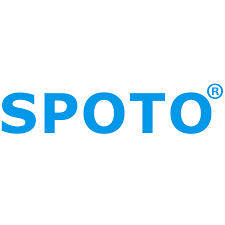
SPOTO Cisco Expert
- SPOTO Cisco Expert
Settle a problem:53
1.0 Problem Statement Analysis
This document addresses a request for a suitable Cisco hardware platform to serve as a primary router and firewall for a private residence incorporating a home lab. The core technical requirements have been extracted and are summarized as follows:
- Internet Connectivity: Symmetric 1 Gbit/s fiber connection.
- Throughput Requirement: The hardware must be capable of routing and firewalling at or near line-rate for the 1 Gbps connection.
- Network Segmentation: The solution must natively support IEEE 802.1Q VLANs to create logically separate networks (e.g., Private, Lab, IoT, Guest).
- Security: A stateful firewall is required to enforce access control policies between the defined VLANs and between the internal network and the Internet.
- Physical & Budgetary Constraints: The device should be power-efficient, quiet (fanless preferred), and adhere to a budget of approximately €200.
- Initial Consideration: The user has identified the Cisco 1100 Series Integrated Services Router (ISR), specifically the C1111-8P, as a potential candidate.
The objective is to evaluate the suitability of the proposed platform and provide a definitive recommendation that aligns all technical and physical constraints.
2.0 Evaluation of the Cisco C1111-8P Platform
The Cisco C1111-8P is an enterprise-grade platform running the powerful IOS-XE operating system. It offers an extensive feature set, including robust routing protocols, integrated switching with PoE, and advanced security capabilities via the Zone-Based Firewall (ZBF).
While technically capable, an analysis of this platform against the specific project constraints reveals several critical mismatches:
- Performance: The C1111-8P’s aggregate throughput is high, but its service-enabled throughput—the performance when features like NAT, Access Control Lists (ACLs), and ZBF are active—is significantly lower. For a 1 Gbps symmetric connection, the C1111-8P would be unable to provide line-rate inspection and forwarding, likely becoming a bottleneck under heavy load. Its IPsec VPN throughput is rated at approximately 250 Mbps, which is a useful indicator of its performance under cryptographic and inspection loads.
- Budget: A new or refurbished C1111-8P, particularly with the necessary Security (SEC) license to enable the advanced firewall feature set, significantly exceeds the specified €200 budget.
- Environmental Factors: As an enterprise device, the C1111-8P is not fanless. While relatively quiet for its class, it may not meet the low-noise requirements of a residential living space. Its power consumption is also higher than that of platforms designed for the small business or prosumer market.
Conclusion: The C1111-8P is an excellent platform for learning advanced IOS-XE, but it is not the optimal choice for this specific use case due to performance limitations at 1 Gbps with services, budget incompatibility, and physical characteristics.
3.0 Recommended Hardware Platform: Cisco Business RV340/RV345
For this specific deployment, the recommended platform is a member of the Cisco Business RV34x Series, such as the RV340 Dual-WAN Gigabit Router. This platform is purpose-built for environments requiring high performance, security, and ease of use, aligning perfectly with the stated requirements.
Justification:
- Throughput: The RV340 boasts a NAT throughput of up to 900 Mbps, making it fully capable of handling the 1 Gbps symmetric internet connection without creating a performance bottleneck.
- Feature Set: It provides comprehensive support for VLANs, allowing for the required network segmentation. Its stateful firewall includes access rules and application control, providing robust security policy enforcement between VLANs.
- Management: The device is managed via a modern, intuitive web-based GUI, which simplifies initial setup and ongoing maintenance while still exposing advanced configuration options required for a lab environment.
- Physical & Budgetary: The RV340 is a fanless, desktop form-factor device with low power consumption, satisfying the environmental constraints. Its market price aligns comfortably within the €200 budget.
4.0 Proposed Implementation Strategy
To effectively integrate the recommended Cisco router, the following deployment model is advised:
-
Network Topology: Configure the existing ISP-provided FRITZ!Box 7530 AX into a “bridge mode” or “exposed host” configuration. This allows the FRITZ!Box to pass the public IPv4 address directly to the WAN interface of the Cisco RV340. The RV340 will then manage all routing, NAT, and firewalling for the network.
-
VLAN and Subnet Schema: Implement a logical network design using VLANs. A sample configuration would be:
- VLAN 10: Private Network (e.g., 192.168.10.0/24) - For trusted personal devices.
- VLAN 20: Lab Network (e.g., 192.168.20.0/24) - For experimental servers and devices.
- VLAN 30: IoT Network (e.g., 192.168.30.0/24) - For smart home devices; highly restricted.
- VLAN 40: Guest Network (e.g., 192.168.40.0/24) - For visitor access; internet-only.
-
Firewall Policy Implementation:
- Create firewall access rules to define traffic flow between VLANs.
- Default Policy: Deny all inter-VLAN traffic by default.
- Explicit Rules:
- Allow established/related traffic from the internet to internal hosts.
- Allow specific, required traffic from the Private VLAN to the Lab and IoT VLANs (e.g., for management).
- Strictly block all traffic initiated from the IoT and Guest VLANs to the Private and Lab VLANs.
- Allow all VLANs to access the internet.
This structured approach ensures a secure, high-performance, and segmented network that meets all the specified operational goals.
